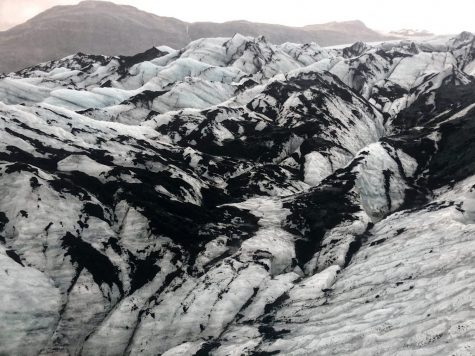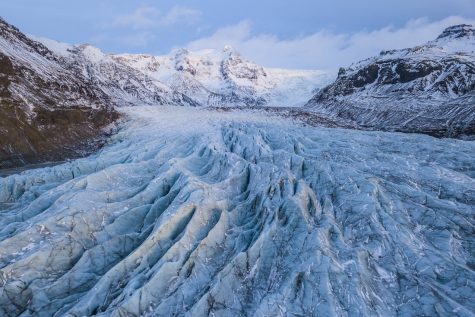Iceland–The Land of Fire & Ice
April 6, 2021
Volcanoes which have been sleeping for hundreds of years have finally awoken this month. Iceland lies directly across the Mid Atlantic Ridge, and the country has a history of benefiting from this volcanic activity, as they use the geothermal heat for energy. There are about 130 volcanoes on the island although not all of them are active. The eruptions put a pause on air travel to and from the country. This is an action similar to one that was taken in 2010 when there was large volcanic activity as well. The ash particles that find their way to very high elevations make the air dangerous to fly through. Ash from the volcano sticks around for a long time and creates a lot of damage. It is harmful to wild animals and livestock and has the potential to spark health problems in people. When I traveled to Iceland, I hiked a glacier, and I was surprised at how black it was. The ash from a volcano that erupted years ago was still clinging to the ice, which looked like the picture that is on the top. The ash covered glacier shows differences in the speed it melts from that of the picture on the bottom. That is because the dark color absorbs more sunlight.


This natural phenomenon is nonetheless very breathtaking. Mount Fagradalsfjall, which began to erupt on March 19th can be seen from space and has been captured by NASA’s Landsat satellite. The glow of lava lights up the clouds above and provides a spectacular view from space. This is an incredible event that is occurring and you can find links to watch some videos below!
Sources:
2010’s Volcano-Induced Air Travel Shutdown Was Justified
Gorgeous NASA photo shows a volcano eruption in Iceland at night
The Ultimate Guide to Volcanoes in Iceland + The Impact of COVID-19









